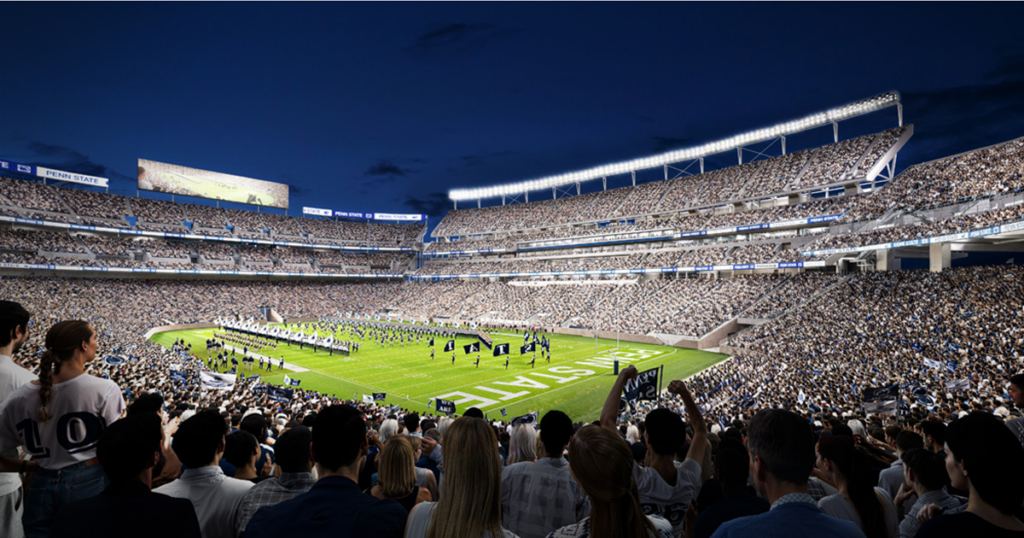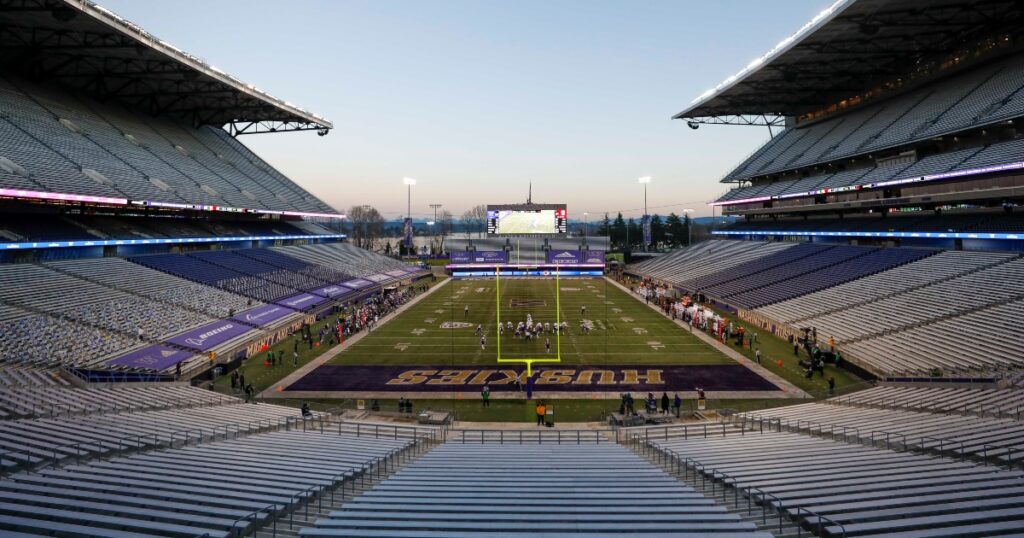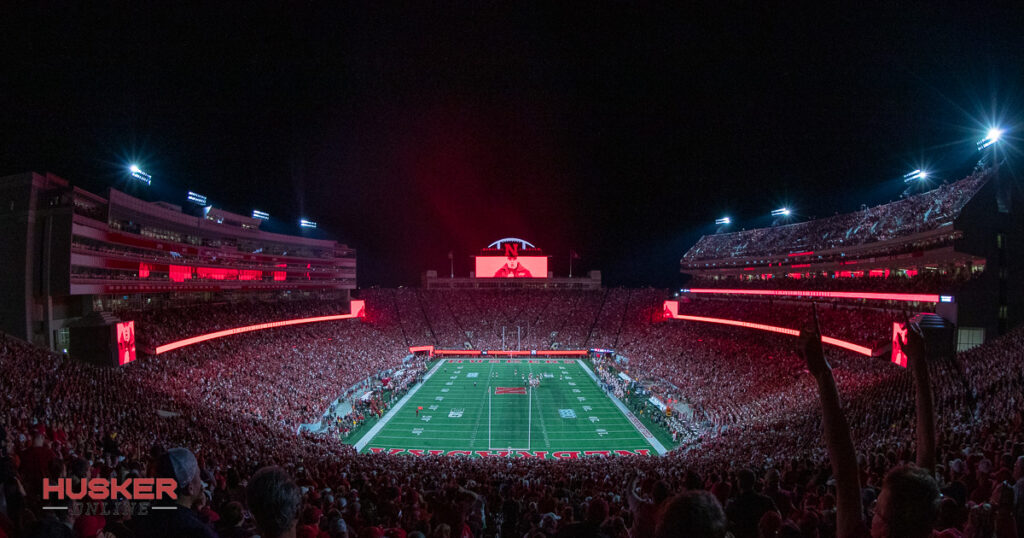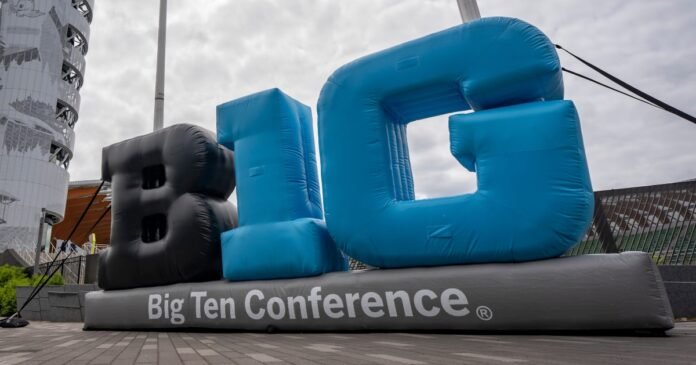One of the things that makes college football great is the debates that fans can have about anything regarding their schools. From how good a team is to how tough their schedule was, it all comes under scrutiny. In the Big Ten, there is an abundance of intimidating environments to play in, and now USA Today has ranked the conference’s stadiums from toughest to least tough.
This comes going into the second season of the expanded Big Ten, which added four new schools from the West Coast. At a total of 18 schools, there are stadiums with plenty of history and tradition. It really makes for a difficult debate when ranking these stadiums.
USA Today noted that there is a clear group of stadiums at the top of the Big Ten. There is also a clear group at the bottom. With all of that in mind, here’s how USA Today broke down the most intimidating Big Ten stadiums from most to least tough to play in as a visitor.
Ohio Stadium opened in 1922, making it over 100 years old. In better than a century of existence, it became known as one of the iconic stadiums in the entire country, commonly referred to as “The Shoe” or “The Horseshoe,” due to its shape. It now holds 102,780 people and has a record attendance of 110,045 fans.
Since 2016, Ohio State has a 55-3 record in The Shoe. That’s two losses to rival Michigan and one to Oregon. For most opponents, it’s basically a guaranteed loss. That’s not something that’s easy to create, and it certainly can’t be ignored.

Currently undergoing a major renovation, Penn State opened Beaver Stadium in 1960, making it a little younger than many other stadiums in the Big Ten. Still, there’s plenty of tradition and a history of intimidation here. With a listed capacity of 106,572, Beaver Stadium has a record attendance of 111,030 that it set in 2024.
One game a year, in particular, the White Out Game, has caught everyone’s attention. Having fans color coordinate their outfits isn’t unique. However, the tradition that is the White Out Game has gone beyond what anyone could have imagined. It’s a special night in a stadium that’s always tough.
3. Autzen Stadium, Oregon
The Oregon Ducks boast the top-ranked stadium among the new West Coast Big Ten schools. Autzen Stadium has become iconic since opening in 1967 and receiving a major renovation in 2002. Its capacity crowds of 54,000 make their presence known.
Unlike many other stadiums, Autzen Stadium’s most dominant era is more recent. In the 21st century, the Ducks took off. In particular, in the Chip Kelly era the Ducks had a 21-game winning streak. Since Dan Lanning got to Oregon, the Ducks have lost just once at home.
4. Michigan Stadium, Michigan
Michigan Stadium, more commonly known as “The Big House,” earned its nickname. Opening in 1927, today the Big House has a capacity of 107,601, which makes it the largest stadium in the United States of America, regardless of what sport or level of competition. Notably, in 2013, 115,109 fit into Michigan Stadium for a game.
USA Today shared that it doesn’t consider Michigan Stadium the loudest crowd. What it does have is size and tradition. In many cases, that’s enough to be intimidating for opposing teams. Certainly, sharing a tunnel has led to some interesting incidents between teams in the past too.

Washington is one of the new schools in the Big Ten. With them, the Huskies brought a brilliant stadium. Husky Stadium opened in 1920 and holds a capacity of 70,083 on Saturdays in the Fall. That may not make it among the largest stadiums in the country, but it remains incredibly intimidating.
Washington’s Husky Stadium has proven itself among the most beautiful in the entire sport, sitting on Lake Washington, which the open end overlooks. As boaters pull up to the stadium on gameday, it does earn the nickname, “The Greatest Setting in College Football.” Of course, more than just pretty to look at, Huskey Stadium can be intimidating too, and due to the stadium’s design, sound is actually trapped inside.
6. Kinnick Stadium, Iowa
Iowa’s Kinnick Stadium opened in 1929 and has since been expanded multiple times. It now has a capacity of 69,250 total fans. Kinnick Stadium hit that capacity in 2018, following its most recent renovation.
In recent seasons, Iowa’s home field advantage has played out in the wins column. They have a 22-6 record at Kinnick Stadium since 2021. Sure, the Iowa Wave, when teams and fans alike wave to a nearby children’s hospital, isn’t intimidating, but it is iconic and part of the experience.
7. Camp Randall Stadium, Wisconsin
Camp Randall Stadium might have the most interesting history in the Big Ten. Built on a Civil War training camp, named Camp Randall, it opened in 1917, making it now 108 years old. With a capacity of 76,057 fans and rumors it’s literally haunted, it’s easy to see why this is such a tough place to play.
One thing Wisconsin’s Camp Randall Stadium does have is one of the iconic traditions in the Big Ten. The song “Jump Around” is played at the end of the third quarter. It both ensures the crowd is in the game and helps build momentum going late into the game.
8. Memorial Stadium, Nebraska

Nebraska’s Memorial Stadium is beloved within the state, after being built with money raised from the public. It would open in 1923. Now, better than a century later, Memorial Stadium has a capacity of 85,458 and record attendance of 91,585 in football and 92,003 in volleyball.
At 403 games and counting, Nebraska has an iconic sellout streak. Fans show up and participate in all the tradition and pageantry of the sport. That’s even true in recent seasons, when the team has struggled, as fans continue to show up.
9. L.A. Memorial Coliseum, USC
The L.A. Memorial Coliseum opened in 1923 and has had numerous uses throughout the years. It’s been used for baseball, professional football, and even the Olympics. Now, primarily acting as the home of the USC Trojans, it has a capacity of 77,500 fans.
There are times when the L.A. Memorial Coliseum suffers from being in Los Angeles, with great weather and plenty to do. However, when USC is rolling, or when big time opponents come around, this is still a great venue. Certainly, it’s unique within the Big Ten.
The Michigan State Spartans have struggled on the field in recent seasons, but Spartan Stadium is still an excellent place to catch a football game. Spartan Stadium would open in 1923, and has been renovated several times to get it to today’s capacity of 74,866 fans, though it has held as many as 80,401 for an individual game.
Throughout the years, Spartan Stadium has held some iconic games. In particular, rivalry games can be very intense here. At the same time, the team has struggled in recent seasons, and that’s always going to have some kind of negative impact on the home environment.
11. Huntington Bank Stadium, Minnesota
12. Memorial Stadium, Illinois
13. Ross-Ade Stadium, Purdue
14. Memorial Stadium, Indiana
15. SECU Stadium, Maryland
16. SHI Stadium, Rutgers
17. Rose Bowl, UCLA
18. Ryan Field, Northwestern
